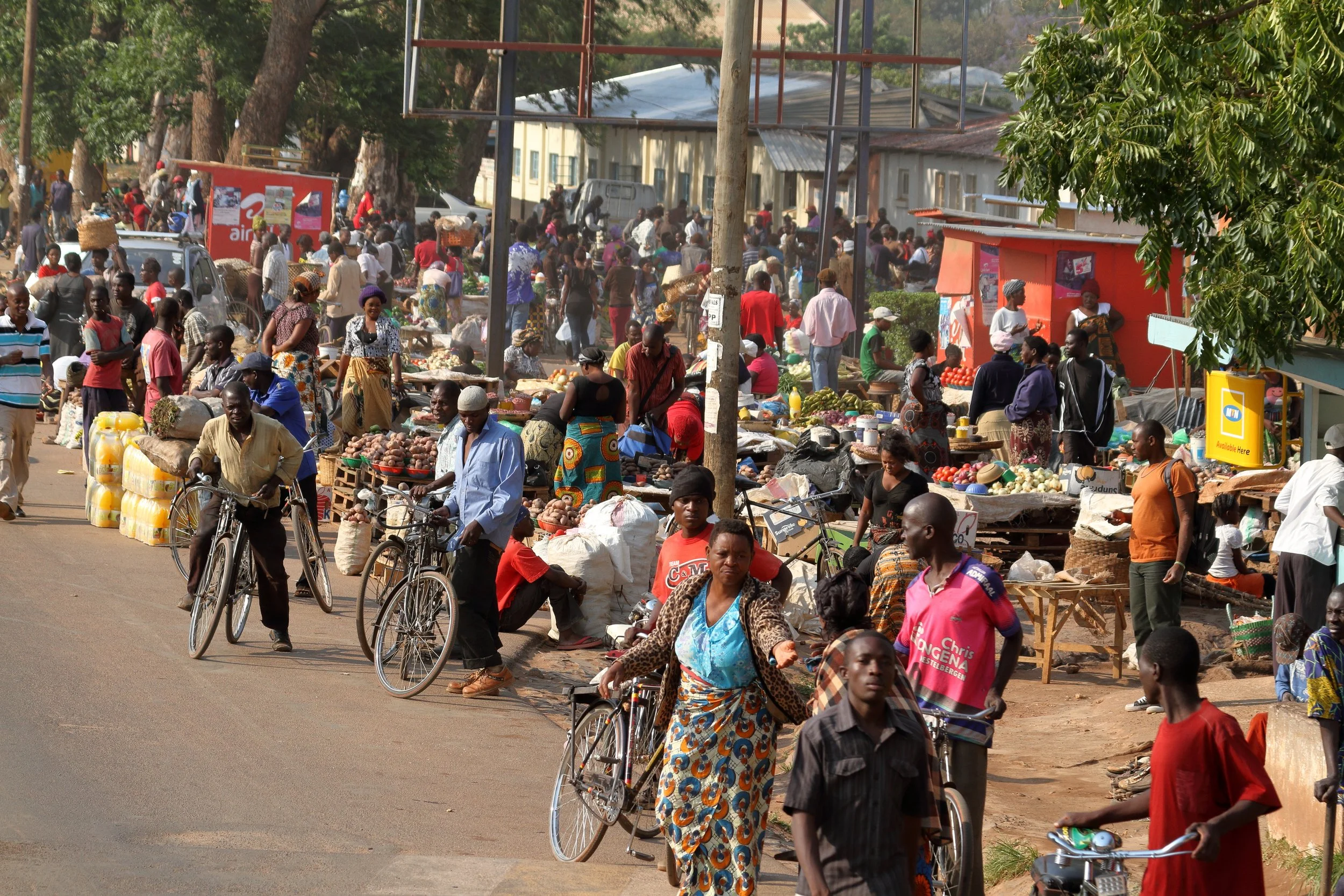RECORDED MUSIC INDUSTRY OVERVIEW
Malawi
Africa
Potential of Recorded Music
MEDI aims to highlight music’s potential as a global tool to reduce poverty and drive economic growth by estimating its worldwide value. This includes projecting how that value could increase if every country had supportive institutions in place, such as appropriate legislation, infrastructure, and policies, and if music achieved full market penetration. We are currently collecting data in each country to support this analysis.
Coming soon
Coming soon
Coming soon
Local Impact
Over time, MEDI will conduct country-level economic and social impact assessments to better understand how to unlock sustainable growth within national music ecosystems.
Coming soon
Coming soon
Coming soon
Coming soon
Coming soon
Coming soon

Socioeconomic Indicators
EXPLANATORY NOTES: Data via UN Population Fund (UNFPA). Accessed 24/10/2024. 2024 estimate based on UNFPA World Population Prospects 2022 data.
21,475,962
EXPLANATORY NOTES: Data via World Bank Development Indicators database. Accessed 24/10/2024.
$35,238
EXPLANATORY NOTES: Data via World Bank, using national accounts data, and OECD National Accounts data files. Accessed 02/04/2025.
$602.34
1.89%
EXPLANATORY NOTES: Data via World Bank, using national accounts data, and OECD National Accounts data files. Accessed 01/04/2025.
EXPLANATORY NOTES: Data via World Bank, Poverty and Inequality Platform. Accessed 19/09/2024.
38.5%
EXPLANATORY NOTES: Data via IMF World Economic Outlook. Accessed 01/04/2025.
24.2%
EXPLANATORY NOTES: Data via US Census Bureau International Database (IDB). Accessed 01/04/2025.
EXPLANATORY NOTES: Data via World Bank, using United Nations Population Division database. Accessed 24/10/2024.
18.28%
EXPLANATORY NOTES: Data via CIA World Factbook. Accessed 04/11/2024.
5.04%
EXPLANATORY NOTES: Data via CIA World Factbook. Accessed 04/11/2024.
6.8%
EXPLANATORY NOTES: Poverty rate at $2.15 a day (2017 PPP) (% population). Data via Poverty and Inequality Platform, The World Bank. Accessed 16/04/2025.
70.06%
EXPLANATORY NOTES: Data via International Telecommunication Union (ITU) DataHub. Accessed 31/03/2025.
18%
EXPLANATORY NOTES: Data via World Bank Global Financial Inclusion Database. Accessed 01/04/2025.
34.35%
EXPLANATORY NOTES: Data via World Bank Global Financial Inclusion Database. Accessed 01/04/2025.
0.97%
EXPLANATORY NOTES: Data via Cable.co.uk. Accessed 01/10/2024.
$0.38

Industry Infrastructure
Collective Management Organisations
Authors & Publishers
Performers
Producers
Voluntary Joint Ventures & Umbrella entities for licensing users
None
Associations
Music Authors
None
Music Publishers
None
Music Performers
Sound Recording Producers/Labels
None
Other
None
Music Export Office
None
Joint Industry Body
None
Policies
Culture Policy/Strategy
Music Policy/Strategy
None
Legal Framework
Digital and Performance Rights Treaties
Other Treaties
National Copyright Legislation
National Treatment
-
Malawi protects works of foreign authors who reside in Malawi, works first published in Malawi, and in accordance with treaties Malawi is a party, subject to published notice by the Minister.
Qualifying foreign authors enjoy protection concerning performance rights and digital exploitation of the eligible works. -
Malawi protects the rights of foreign performers and producers of phonograms in accordance with the treaties Malawi is a party, subject to published notice by the Minister).
Malawi also protects the rights of foreign performers if the performance takes place in Malawi, is fixed in a protected phonogram or is embodied in a protected broadcast (i.e., when the headquarters of the broadcasting organisation is in Malawi or transmitters are situated in Malawi). Phonograms are protected if the producer is a national or resident of Malawi, the first fixation was made in Malawi, and the phonogram was first published in Malawi.
Qualifying foreign performers and producers of phonograms enjoy protection concerning reproduction rights, performance rights and digital exploitation of their fixed performances and phonograms, respectively. -
“National Treatment” refers to the assimilation of the treatment of foreign right holders to that of domestic right holders. It is a basic rule of most international conventions and mandates that foreign rights holders from contracting countries must receive the protection within any other contracting country as that country grants to its own nationals, ensuring equal rights under the scope of the relevant convention.
General national treatment obligations are set out in Article 5 of the Berne Convention and Article 2 of the Rome Convention, providing that the members of respective conventions must grant to each other’s nationals the rights provided in the convention. Berne Convention also extends the national treatment to “the rights which their respective laws do now or may hereafter grant to their nationals,” while Rome Convention members are not obliged to extend national treatment to the rights of performers and producers of phonograms which are accorded under their national law over and above the rights enshrined in the Rome Convention.
The criteria for eligibility for protection are provided in Article 3 of the Berne Convention and Articles 4 and 5 of the Rome Convention. With regards to national treatment of producers of phonograms, members of the Rome Convention may reserve the right not to apply either the criterion of fixation or that of publication of the phonogram.
As per WIPO, the total number of members to the key treaties above is as follows:
Berne Convention: 181 Members
Rome Convention: 98 Members
WIPO Copyright Treaty: 118 Members
WIPO Performances and Phonograms Treaty: 114 Members
TRIPS Agreement: 166 MembersThis is a high-level overview concerning national treatment of music authors, performers and producers of phonograms; for comprehensive and detailed provisions, refer to the laws of each country. The overview:
1) details only the criteria applicable to foreign rights holders, without including the broader set of qualification rules for domestic protection that do not concern them,
2) is limited to performance rights and digital exploitation of recorded music, including works and other protected objects:
- “Performance rights” include radio and TV broadcasting, public performance, and communication to the public,
- “Digital exploitation” includes reproduction rights, distribution rights, communication to the public and making available rights.
The term "based on reciprocity" used in the overview for some countries means that Country A will protect the works of authors or other right holders who are nationals of Country B that is not a member of treaties Country A is a party to, and whose works or other protected objects were first published outside of Country A, only if Country B offer similar copyright protection to Country A’s authors or other rights holders and works and other protected objects respectively first published in Country A.
The term "treaty" in the overview includes conventions and international agreements.
Music Consumption
Domestic Repertoire Quotas
Yes
There are domestic repertoire quotas for broadcasters which vary depending on the broadcaster type. The annual average % of local content programming required by broadcaster type is as follows:
- Public Television Content Broadcasting Licensees: 50%
- Commercial Television Content Broadcasting Licensees: 35%
- Subscription Television Content Broadcasting Licensees: 8%
- Public Sound Broadcasting Licensees: 60%
- Private Sound Broadcasting Licensees: 40%
- Community Sound Broadcasting License 40%
The full text of the quotas may be found in the Communications (Broadcasting) Regulations, 2019 - Section 43, and Schedule 2
Digital Streaming Services
GLOBAL STREAMING SERVICES
REGIONAL STREAMING SERVICES
DOMESTIC STREAMING SERVICES
None
Key Risks and Opportunities
Risks
Very low GDP per capita and a high poverty rate leave most of the population with little disposable income, significantly limiting the ability to pay for music or subscribe to premium services and making monetization difficult.
High inflation erodes purchasing power, raises operational costs for music businesses, complicates financial planning, and creates a less stable environment for investment.
Low internet penetration limits access to digital music platforms for much of the population. Additionally, extremely low credit card ownership and only moderate mobile money adoption make traditional international payment methods for digital services like music platforms largely inaccessible to most people.
Malawi has not ratified the key international digital treaties nor the neighbouring rights convention, which limits protection for Malawian creators abroad and could complicate international collaborations, licensing, cross-border royalty collections, and the full protection of digital rights.
Opportunities
Malawi’s large and growing youth population represents a substantial long-term audience and potential consumer base for music and digital content.
Comparatively low mobile data cost serves as an enabler for digital music consumption, making streaming and downloads accessible, despite low disposable income.
The presence of a few global and regional streaming services indicates existing digital music consumption and infrastructure, offering avenues for Malawian artists to reach a broader audience.









